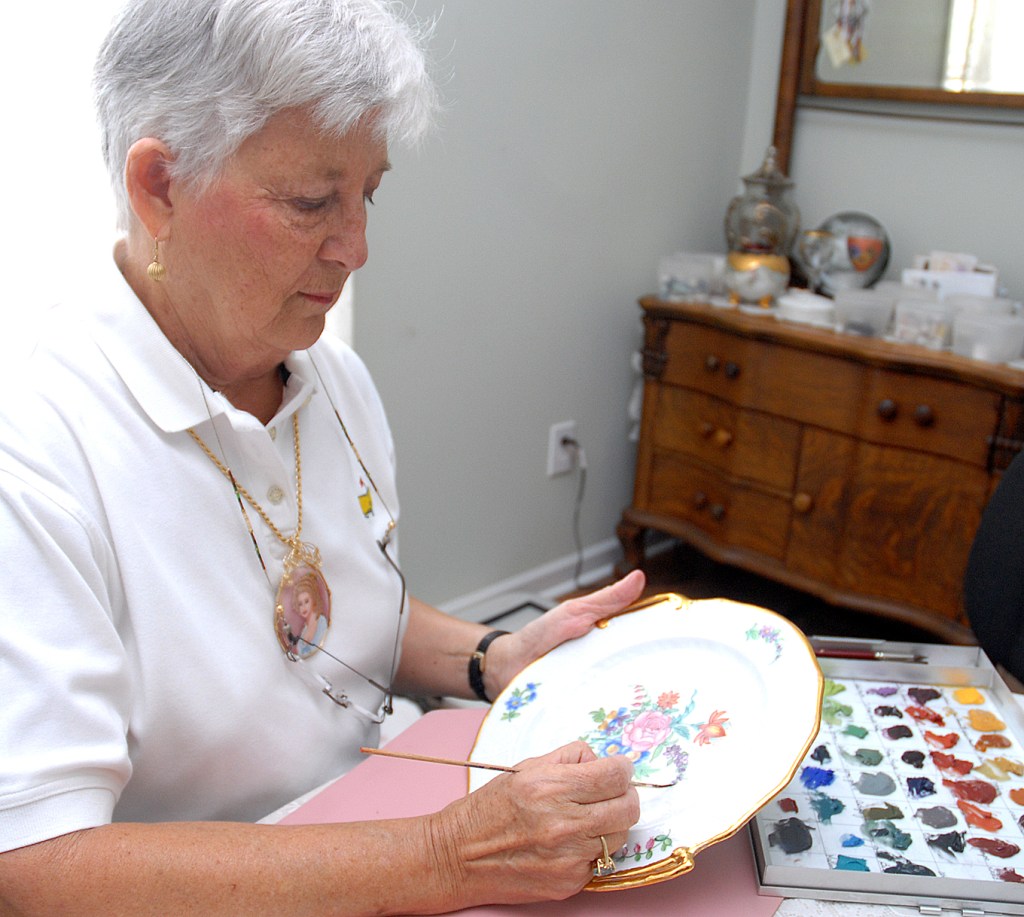Elegant Embellishments
Published 3:21 pm Monday, September 1, 2008

- Mary Gary Schollian, above, enjoy porcelain painting as a past time. The art work is time consuming, with each detail having to be fired in a kiln separately, creating a one-of-a-kind piece of art.
Many area residents may know Mary Gray Schollian for her work at Athens-Limestone Hospital. Before her retirement in 1999, she served as the director of nursing services and then chief operating officer of the hospital.
Now, she’s mostly been playing, she said.
She loves to play golf, tat and knit with a group at First United Methodist Church, but her passion is porcelain painting.
Schollian began doing decorative painting on wood, changed to oil painting and then found her passion for porcelain painting in 1983. She was taught by several area artists including the late Bob Thompson, Jane Hudson and Carol Watt.
The exquisite art form is an entertaining, rewarding pastime, she said.
“I’ve used it as so many gifts for so many people over the years,” she said. “It seems to be appreciated that it’s a handmade gift.”
The discovery or invention of porcelain dates back to approximately 10th Century A.D. It was later duplicated in factories in Europe about 1700. Decorating the porcelain became a fine art and often was demanded by royalty, Schollian said.
The art often decorates many American dinner tables as fine china.
“When you say ‘china’ everyone thinks it’s just dishes, but as you can see it’s much more,” Schollian said.
Schollian has done porcelain painting on several items including various types of glasses, tea tiles, dishes, ornaments, broaches, pendants for necklaces, vases and more.
Porcelain paint is different in the fact that it contains flux in the form of tiny glass particles. This helps the paint bond and become permanent on the piece being decorated. It can be used on pure glass and porcelain.
There are various types of porcelain plants with lusters, metallics, enameling, and gold. The paints come in powder form and are mixed with mineral oils until their consistency is a little thicker than toothpaste, Schollian said.
As each detail is painted or embellished, it is fired in a kiln separately to set it.
“You certainly can put a lot of time into it,” she said.
Schollian is a member of two porcelain painter guilds, the Parthenon Porcelain Guild in Nashville and the Alabama Porcelain Painters Guild.
“Most of the china painters are older ladies and we need some younger people,” she said.
The Alabama Porcelain Painters Guild meets four times a year, second Saturdays of March, June, September and December, at the Commission on Aging building in Cullman. Current memberships of the guild are of North Alabama including the Tri-cities, Huntsville, Decatur, Athens, Oneonta, Cullman, Birmingham, Tuscaloosa and other areas. For information about the guild call (256) 734-2421.





